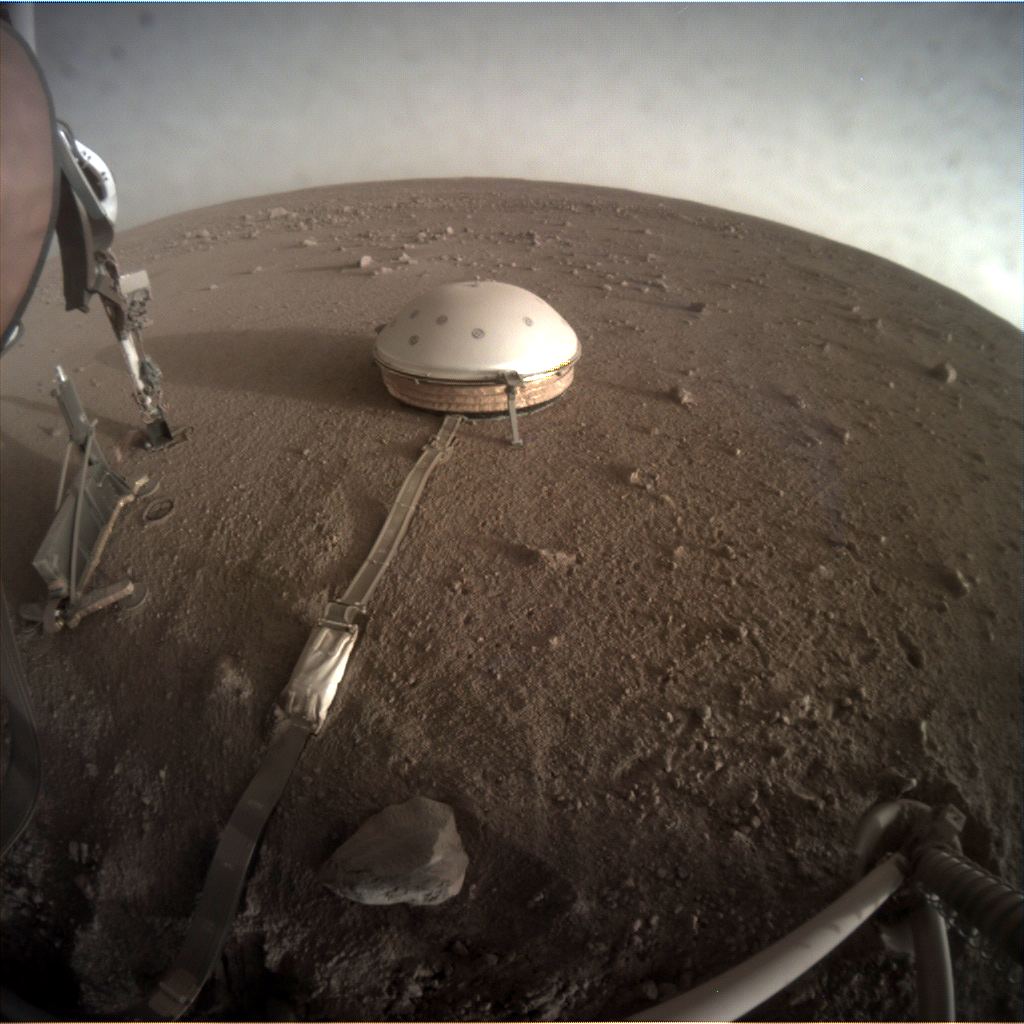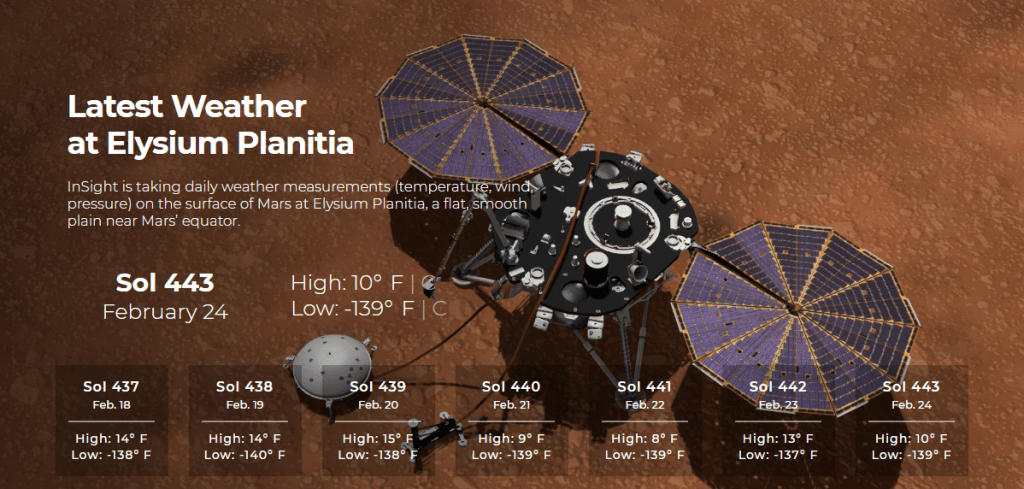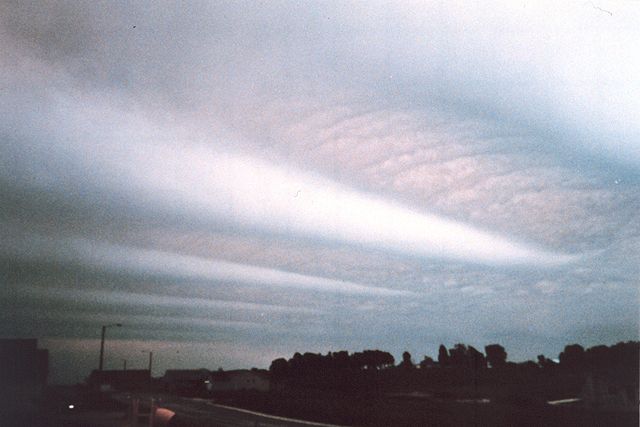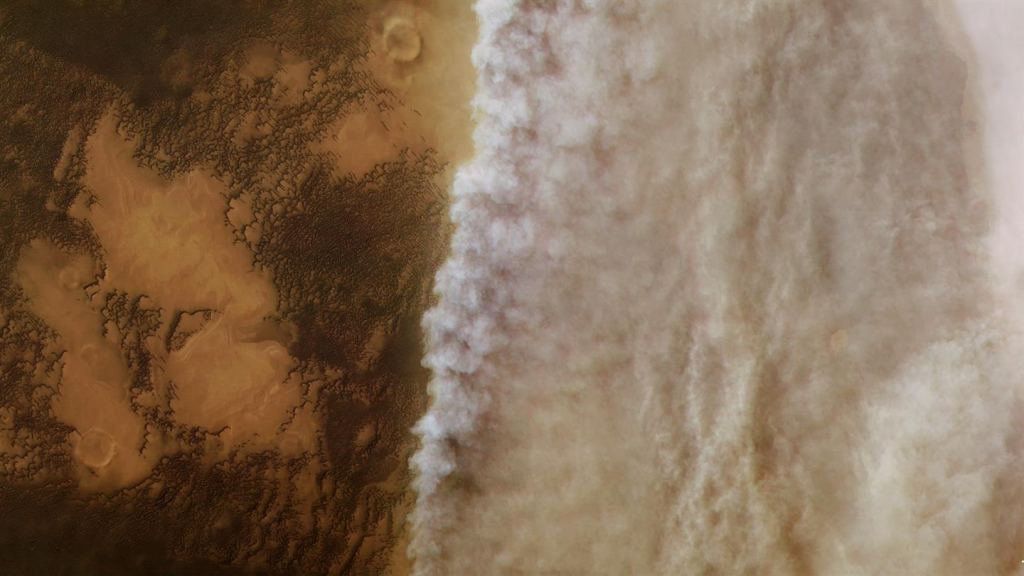The InSight lander has been on the surface of Mars for about a year, and a half dozen papers were just published outlining some results from the mission. Though InSight's primary mission is to gather evidence on the interior of Mars—InSight stands for Interior Exploration using Seismic Investigations, Geodesy, and Heat Transport—the lander also keeps track of Martian Meteorology. A new paper reports that InSight has found gravity waves, swirling dust devils, and a steady background rumble of infrasound.
These new results are published in the journal Nature Geoscience. Lead author is Don Banfield from Cornell University. The paper is titled " The atmosphere of Mars as observed by InSight."
InSight's primary science instruments are designed to probe the interior structure of Mars. They include the Heat Flow and Physical Properties Package (HP3), the Seismic Experiment for Interior Structure (SEIS), and the Rotation and Interior Structure Experiment (RISE). But another suite of instruments, called the Auxiliary Payload Sensor Suite (APSS), measures the temperature, wind, atmospheric pressure and magnetic field near the lander.
Altogether the APSS is a weather station—and more—that gives daily weather reports from its location on Mars.
Some of the findings are not necessarily that surprising. The daily temperature and pressure fluctuations are more pronounced on Mars than on Earth. "The atmosphere is so thin that it can heat up and cool down much faster than on Earth," said lead author Banfield in a press release.
But according to the science team, the discovery of gravity waves (not gravitational waves) was a surprise. Gravity waves are generated in a fluid, which in physics includes atmospheric gases, when those fluids are out of equilibrium. As the fluid seeks equilibrium, the waves are propagated.
On Earth gravity waves can create distinct cloud forms called wave clouds. There are still questions about Martian gravity waves. "We're still working to understand what these waves can teach us about Mars," Banfield said. In their paper the researchers said they discovered "unexpected similarities between atmospheric turbulence on Earth and Mars."
"It’s still mysterious as to exactly what causes the signals we’ve heard, but we’ll keep studying." don Banfield, Lead Author
The researchers also discovered what's known as infrasound on Mars, something that they expected to find. Infrasound is a low-frequency rumble that's outside the range of human hearing, below 10 Hertz. "We expected infrasound would exist, but this is the first direct measurement," Banfield said. "It's still mysterious as to exactly what causes the signals we've heard, but we'll keep studying."
InSight also sensed thousands of dust devils during its first year, though none were ever seen by the lander's cameras. "We have seen the pressure signature of thousands of dust devils, and we have tried to take images at the right times of day," Banfield said. "We've caught absolutely no dust devils on camera. Other landers have more effortlessly imaged dust devils, so it's surprising that we haven't even captured an image of one."
"This site has more whirlwinds than any other place we've landed on Mars while carrying weather sensors," said Aymeric Spiga, an atmospheric scientist at Sorbonne University in Paris.
Overall, the APSS is giving scientists the opportunity to study up close an atmosphere other than Earth's. Orbiters and other landers have watched the Martian atmosphere, but InSight is giving us our most continuous and accurate sampling of atmospheric conditions on the red planet. In their paper, the team of researchers states that InSight "extends our understanding of Mars's meteorology at all scales."
Not only do the lander's instruments take frequent measurements of conditions at its locale, but it also sat through a large dust storm shortly after it reached Mars. These large storms occur frequently on Mars, sometimes becoming truly global storms.
Mars is much drier than Earth, obviously. On Earth the moisture in the atmosphere plays a large role. On Mars, it's the dust that plays a significant role. The airborne dust has an oversize impact on Mars' thin, sunlight controlled atmosphere. The dust contributes to gravity wave features near the surface, though the researchers don't have a clear picture of how it all works yet.
Mars researchers are excited by InSight's capabilities and results so far. Though other satellite-based research has looked at the upper atmosphere for extended periods of time, InSight is the first ground level, in-situ, long-lasting measuring station for the Martian atmosphere. InSight's APSS measurements not only supplement orbital measurements, but the data can serve to help prove or disprove models of the Martian atmosphere.
InSight has also detected airglow and noctilucent clouds at Mars, both of which are upper atmosphere phenomena. Along with the gravity waves, the unseen dust devils, and the infrasound, that's a treasure trove of data for the lander's first year.
With about one more year to go in the mission, who knows what else the lander will unearth? Especially if the HP3 starts working.
More:
- Press Release: InSight detects gravity waves, low rumbles and devilish dust
- Research Paper: The atmosphere of Mars as observed by InSight
- Press Release: A Year of Surprising Science From NASA's InSight Mars Mission
 Universe Today
Universe Today



